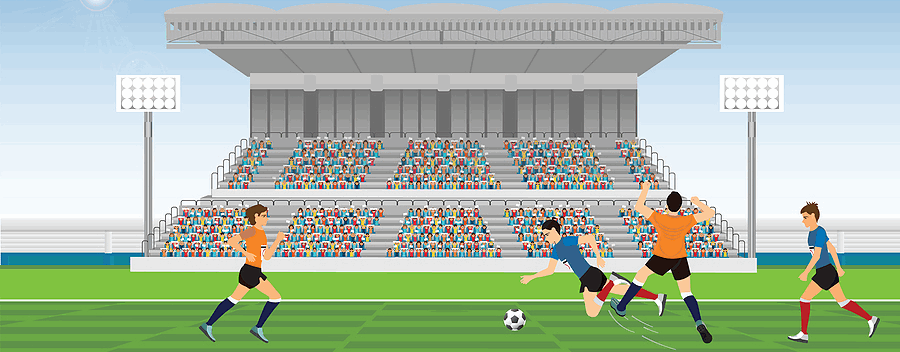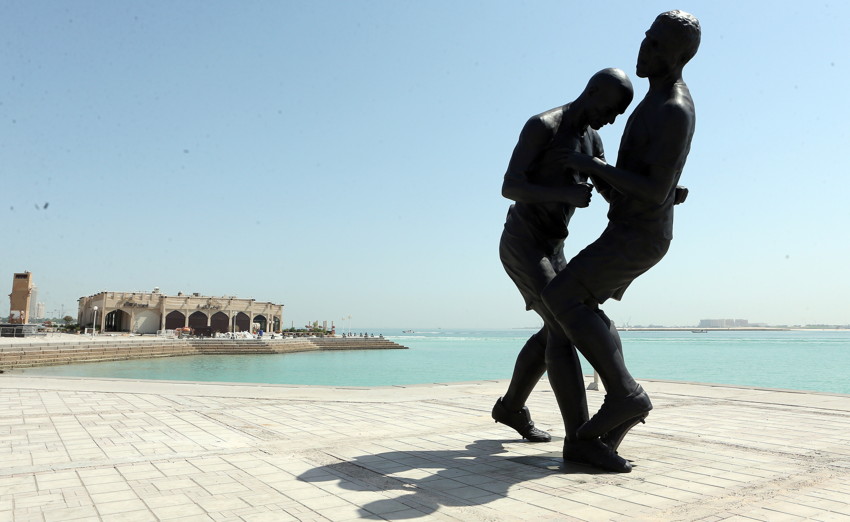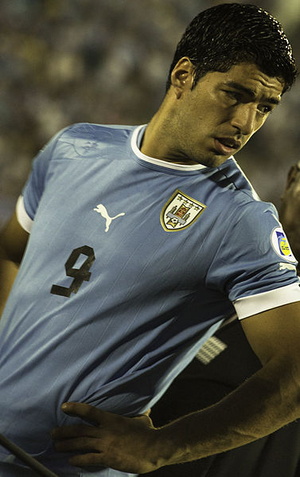 You can read about the history of yellow and red cards elsewhere on this site, which we’ve covered in great detail.
You can read about the history of yellow and red cards elsewhere on this site, which we’ve covered in great detail.
This page is more about the history of fouls and the manner in which a decision was taken to introduce disciplinary procedures to the game of football. It is arguably the key thing that finally saw football began to move fully away from rugby as a sport after the two were so closely linked initially.
It was, of course, seen as a gentleman’s game during its more formative years, so the idea of needing to create a system in order to stop players fouling each other seemed alien to the members of the Football Association when they were creating the rules of the game hundreds of years ago.
It was something that was developed after years of the game being played and the real world scenarios that it threw up.
The Definition Of A Professional Foul

A professional foul is the phrase given to an action in the world of professional football. Essentially, it involves a player on the defending team fouling a player on the opposition side in order to stop them from scoring or having a clear goal scoring opportunity. Equally, defending team players can’t handle the ball in the manner that will deny a clear goal scoring chance.
Because the resulting free-kick or penalty may provide the attacking team with less of an opportunity to score than they had originally, there is a clear incentive for the defending player to weigh up whether to foul or not. Referees are then faced with a choice of whether the offence is worth issuing a caution for, with yellow and red cards the choices that they are faced with being able to issue.
Many football supporters will refer to a player being the ‘last man’, but in actuality that is irrelevant when it comes to the referee’s decision making. In fact, the phrase ‘last man’ has been part of the Laws Of The Game. Supporters might well feel that a player should definitely be sent off because of a foul if they’re the last man, but that isn’t automatically the case and the phrase ‘last man’ can be misleading.
Referees will weigh up the likes of the distance from goal that the offence took place, the likelihood of the player keeping the ball under their control before the foul happened, the direction of the play and both the number of defenders and their locations when deciding the punishment that should be given in addition to the awarding of the foul. It is informally known as a DOGSO, or Denial of an Obvious Goal-Scoring Opportunity.
The History Of The Professional Foul

Whilst there had been controversial examples of professional fouls being committed almost since the advent of football, there was no real call to change rules until the 1980 FA Cup final. Paul Allen of West Ham United had a clear run at goal, resulting in Arsenal’s Willie Young deliberately fouling him in order to prevent him from scoring. The Laws at the time meant that the referee had little choice in what to do.
All he was permitted to do according to the Laws Of The Game at the time, the match referee, George Courtney was only allowed to to issue a caution to Young and give West Ham a free-kick. The result in the wake of the match was a national debate about what should actually happen in such an instance, which would have been more severe had West Ham not gone on to win the match 1-0 regardless.
At the start of the 1980s, there was something of a downturn for the Football League in terms of match attendances. Chairmen of the Football League clubs met to decide how the game could be made more exciting, appointing a subcommittee in order to look into the matter. It consisted of Jimmy Hill as Chairman and included the likes of Bobby Charlton and former Liverpool captain Matt Busby.
The panel recommended that an offence that denies the attacking player the opportunity of scoring a goal then it should be deemed ‘serious foul play’ and receive a red card as punishment. The idea was submitted to the International Football Association Board but was initially defeated. Indeed, it didn’t become one of the official rules in the Laws Of The Game until 1990, when it was used for the first time in the 1990 World Cup.
The rules were altered again in 1991 in order to include a handball offence that denied a clear goalscoring opportunity as being a red card offence. The Laws were amended once again in 2016, this time in order to say that a professional foul that resulted in a penalty being awarded shouldn’t also be given a red card in cases where the defending player was making a genuine attempt to play the ball.
Controversial Incidents

There have been a number of controversial incidents around fouls over the years, with perhaps none more noteworthy than the handball committed by Luis Suarez during the 2010 World Cup. His nation of Uruguay were up against Ghana in the quarter-final match when the game was tied at 1-1. Ghana had a shot from Dominic Adiyiah in the final minute of extra-time that would certainly have resulted in them winning the match.
Suarez, who was already a controversial figure at the time, threw his hand in the way of the shot and stopped the goal from being scored. He was sent off and Ghana were awarded a penalty, which Asamoah Gyan missed. The game consequently went to penalties, which Uruguay won 4-2. Many were incensed, but Uruguay’s players carried him around the pitch in celebration.
One of the best-known incidents after the law was officially changed came in 1998. Ole Gunnar Solskjær was playing for Manchester United and ran from the opposition box to the opposite end of the Old Trafford pitch. When he got there he tripped Newcastle’s Rob Lee, stopping him from scoring in a one-on-one with goalkeeper Raimond van der Gouw. He was sent off and a penalty awarded.
The match ended 1-1, which resulted in the title battle between Manchester United and Arsenal being prolonged. That was because United achieved the point, rather than losing the match when Newcastle missed the resulting penalty. In the end it made no difference, however, thanks to the fact that Arsenal won the title for the first time since 1991. They did so by a single point, which would have been more if not for the foul.
There was also a noteworthy incident during the 2006 Champions League final between Arsenal and Barcelona. Samuel Eto’o was brought down outside the area by the Gunners’ goalkeeper Jens Lehmann. Ludovic Giuly was there to tap the ball into an empty net, but the referee disallowed the goal and gave Barcelona a free-kick, showing Lehmann a red card for the offence.
Arsenal felt that the goal should have stood and that they should have played on with 11 men. Barcelona went on to win the match 2-1, with both goals coming late on in the match. Sol Campbell had given the London club the lead with a header at the 37th minute mark, which came nearly twenty minutes after the sending off. The Gunners held on until around fifteen minutes before full-time, with the winner coming after 80 minutes.
